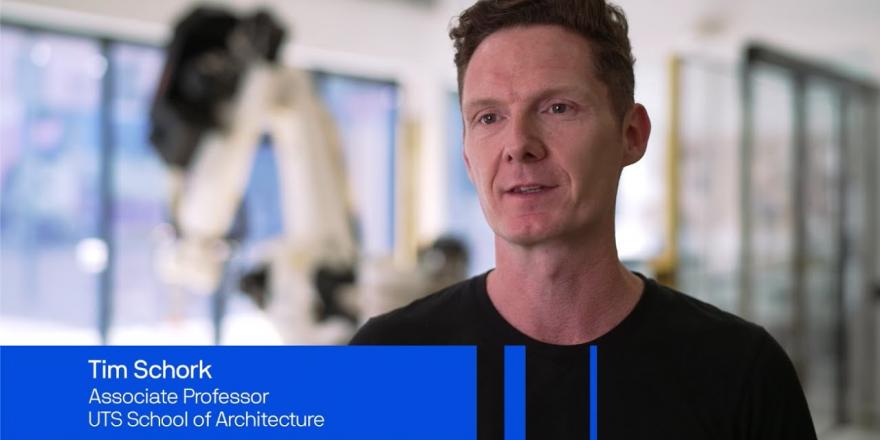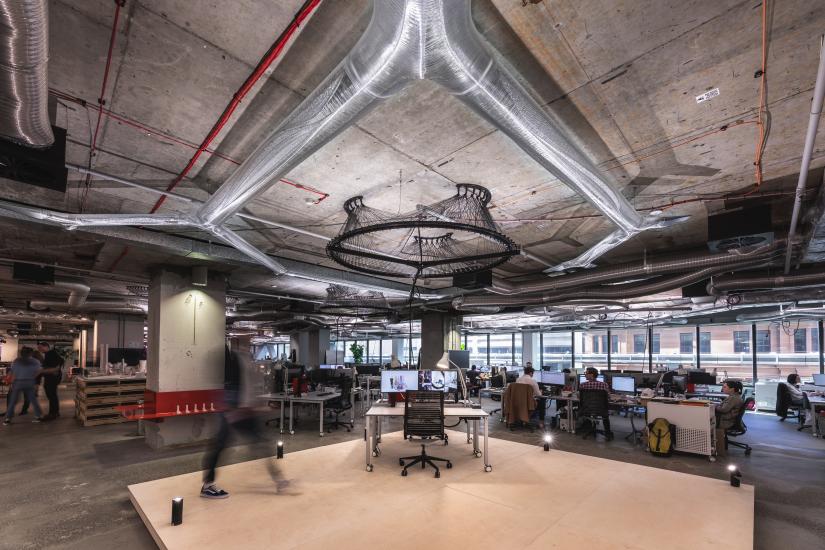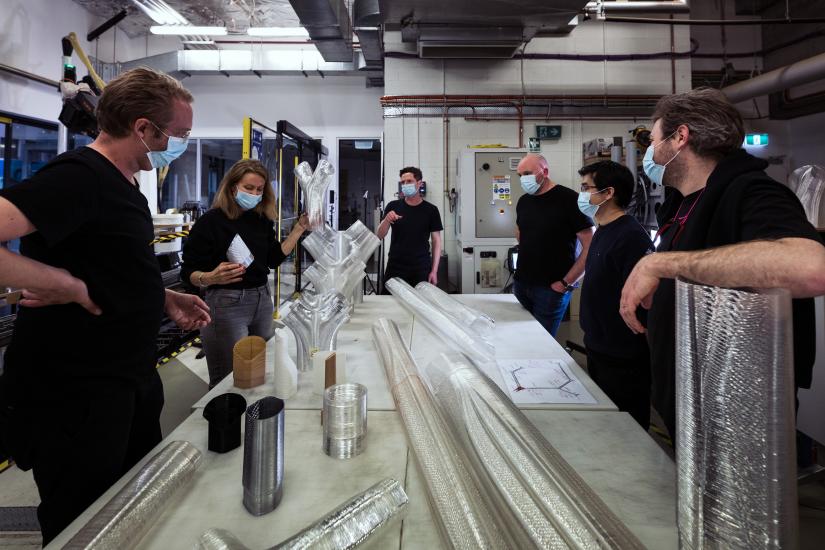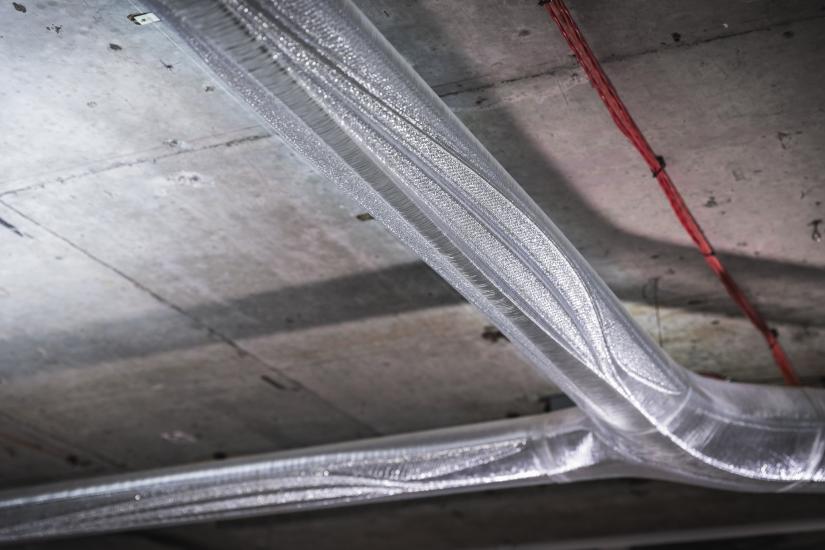World’s first robotically 3D-printed air-diffusion system holds promise of reducing the building industry’s carbon footprint.

As one of the world’s biggest polluters, the building sector is responsible for nearly 40 percent of annual global greenhouse gas emissions.
Now architectural practice BVN and the UTS School of Architecture have teamed up to tackle the problem head on, with the design of the world’s first robotic 3D-printed air diffusion system, called ‘Systems Reef 2’ (SR2).
SR2 reinvents air distribution: replacing steel with recycled plastic, square corners with aerodynamic curves, and large vents with fine pores.
It offers a 90 percent reduction in embodied carbon when compared to existing systems. Made from recycled plastic waste, it can be fully recycled at the end of its life, exemplifying circular economy principles.

SR2 installed in the BVN office space in Sydney.
Reducing embodied carbon
SR2 is designed to fit into existing air-conditioning units, replacing the traditional steel duct work that has barely changed in design over the past 50 years.
Ninotschka Titchkosky, co-CEO of BVN Architecture, said often in architecture the spotlight is on the environmental impact of the materials and structure of buildings.
“However, at BVN we are also mindful that the electrical, plumbing and mechanical systems inside a building contribute up to 33 percent of the total carbon cost of a typical office building,” she said.
“This means if we are to be serious about reducing the carbon impact of building design, we have to also rethink how we deliver air in buildings. This new system – SR2 – is really about this. It’s 3D-printing air”.
“98% of all buildings are existing, therefore if we are to address climate change we need to adapt and reinvent our existing buildings to ensure they remain relevant,” said Titchkosky.

The 3D-printed air-diffusion system was made in the UTS Advanced Fabrication Lab.
Transformative technologies
The invention makes use of the unique properties of advanced manufacturing. Robotically 3D-printed and computationally designed, the system is adaptable and customisable.
“As a society we are facing significant challenges and we can’t afford to continue building in the same way we do now,” said Associate Professor Tim Schork from the School of Architecture at UTS.
“What is required is a fundamental rethink and radical transformation of our current practices. We need to develop new approaches to design, materials and construction,” he said.
As a society we are facing significant challenges and we can’t afford to continue building in the same way we do now
Associate Professor Tim Schork
Comfort and efficiency
To create the components, the team programmed an industrial robot to strategically place thousands of tiny tailor-made pores in elongated tubes that slot together to create a networked system.
“Rather than dumping air at routine intervals across a floorplan, this design distributes the air evenly: meaning that there is a more consistent air temperature and flow and nobody needs to sit under the cold draught of a high-powered vent,” said Associate Professor Schork.
But the design isn’t just about comfort. The distinctive organic curves are based on detailed computer modelling that demonstrates that the curved design significantly reduces energy loss and encourages air flow.
“Air doesn’t move in right-angles, so it’s not logical to design an air distribution system with square corners,” said Associate Professor Schork.

SR2 reinvents air distribution.
Collaboration key to success
SR2 is a model example of a successful industry and university research collaboration, with each bringing unique insights, knowledge and expertise.
“The project has not only moved the boundaries of what is possible in architecture using computation, robotics, large-scale 3D-printing and low-embodied energy materials, it has also opened an entirely new research direction by envisioning new ways of designing and making new building services,” said Associate Professor Schork.
“Only by working closely together were we able to design and fabricate this unique system.”
For both Associate Professor Schork and Titchkosky there is an urgency to shifting existing building practices, by harnessing advanced technology and developing the digital design tools and manufacturing systems necessary to create a decarbonised building culture.
“We have one of the highest levels of waste out of OECD countries, and as architects, it's really important that we're making a positive contribution and beginning to influence the industry to change,” said Titchkosky.
Find out more about SR2 on the project website
Partner with UTS
- Find a UTS expert in your industry
- Explore our capabilities
- Research careers at UTS

